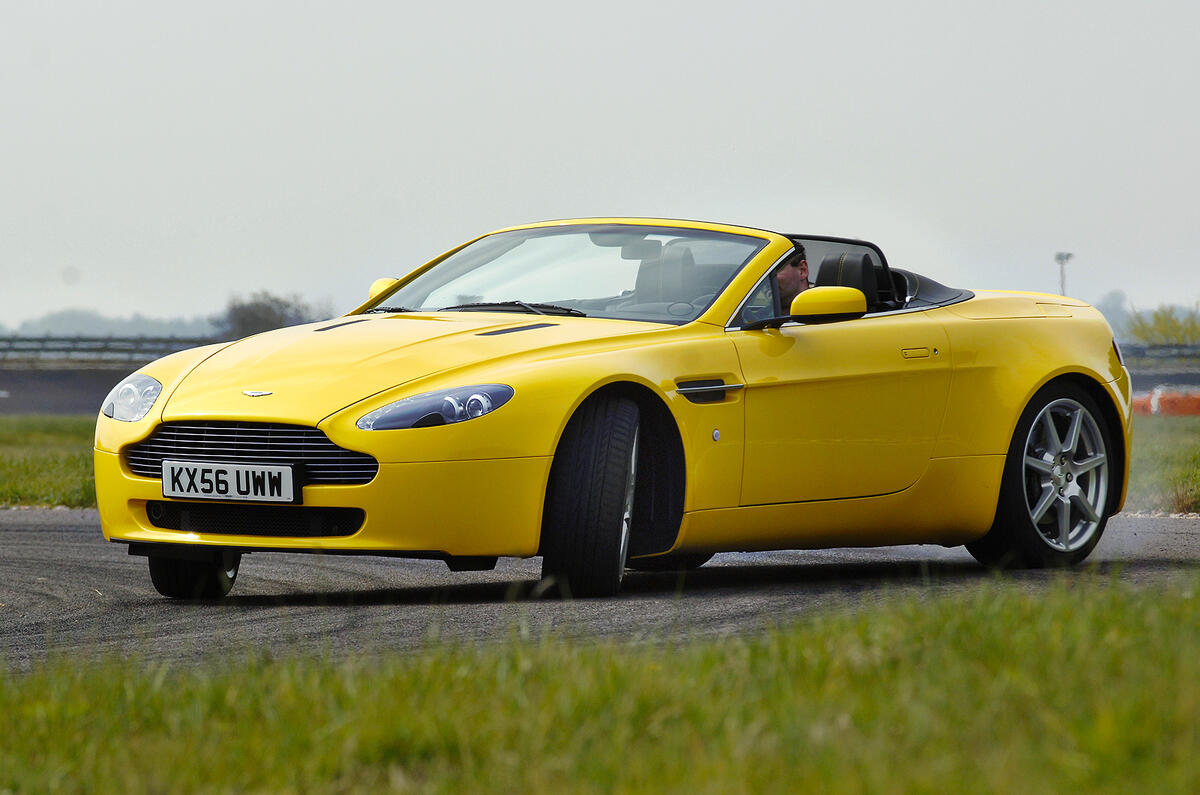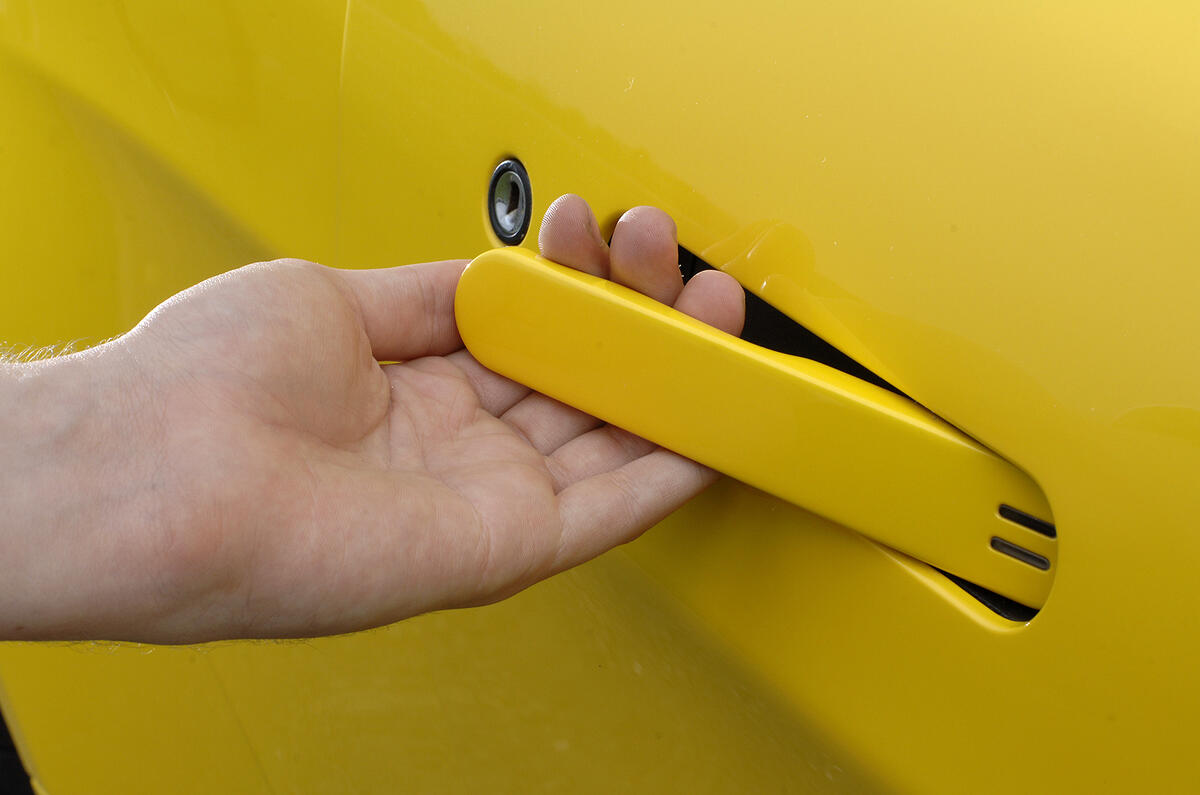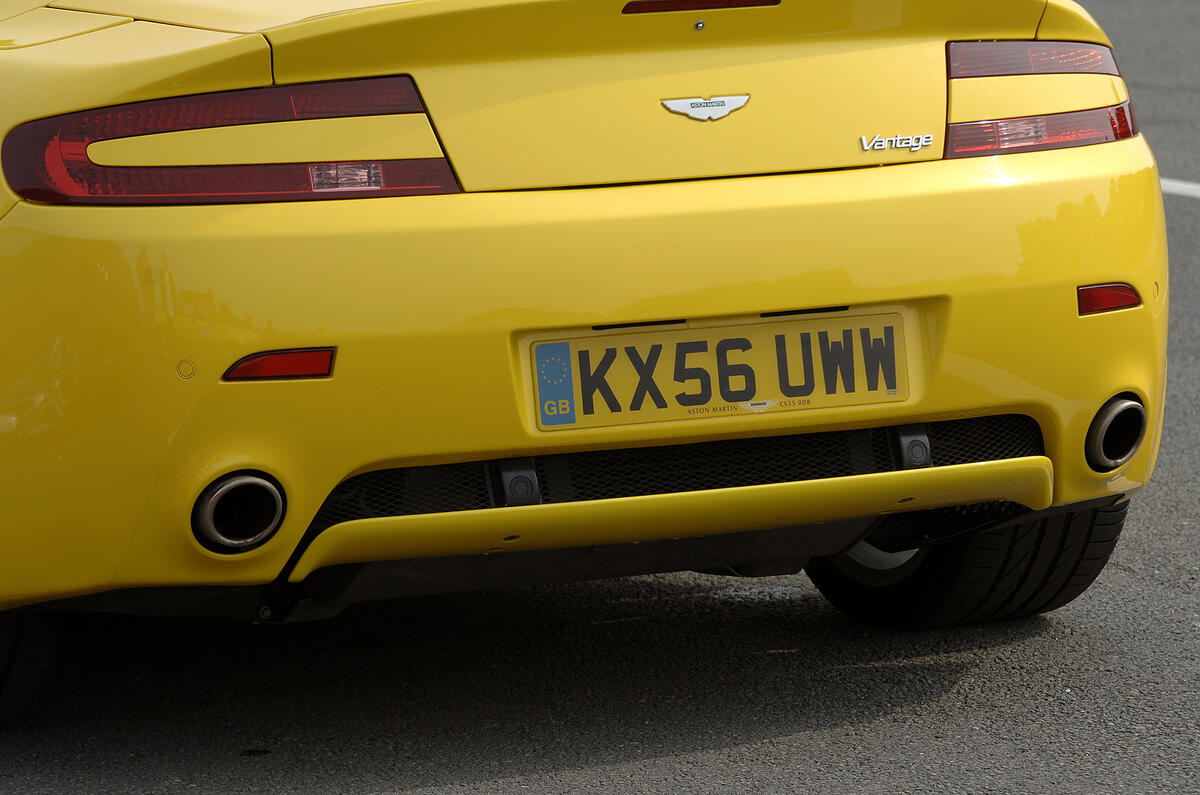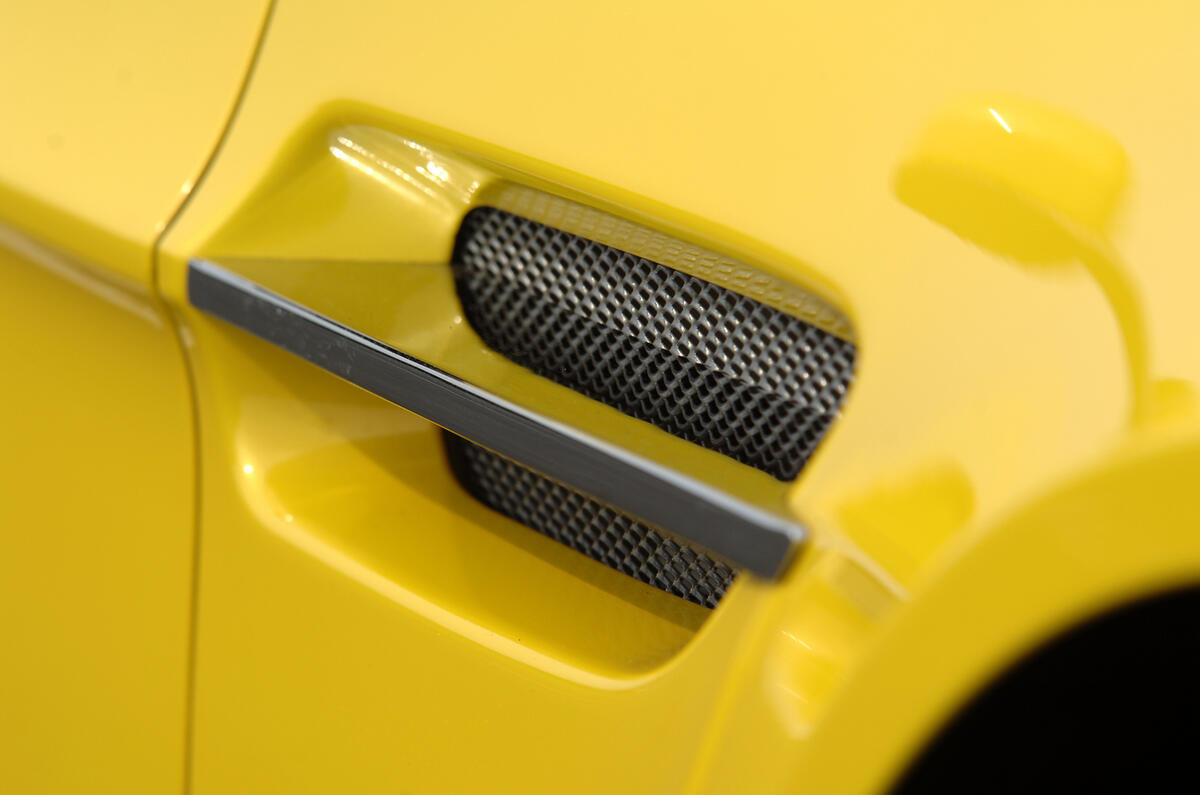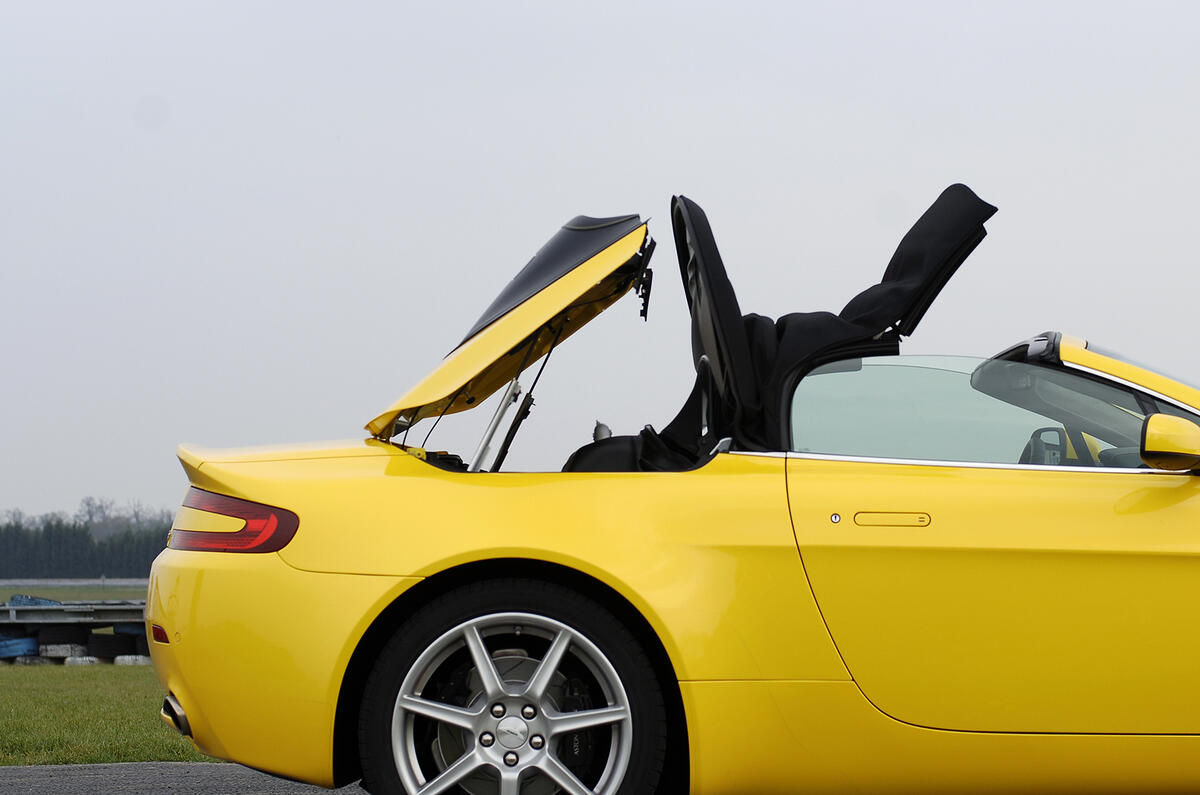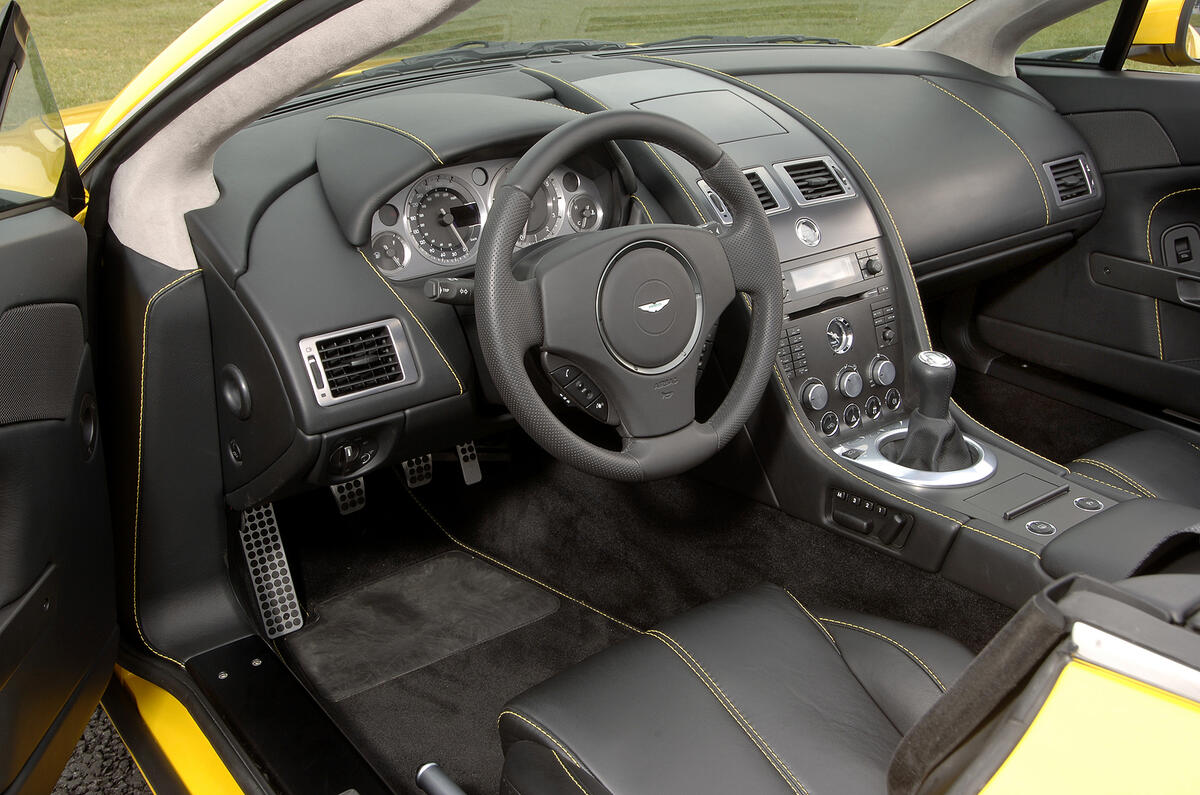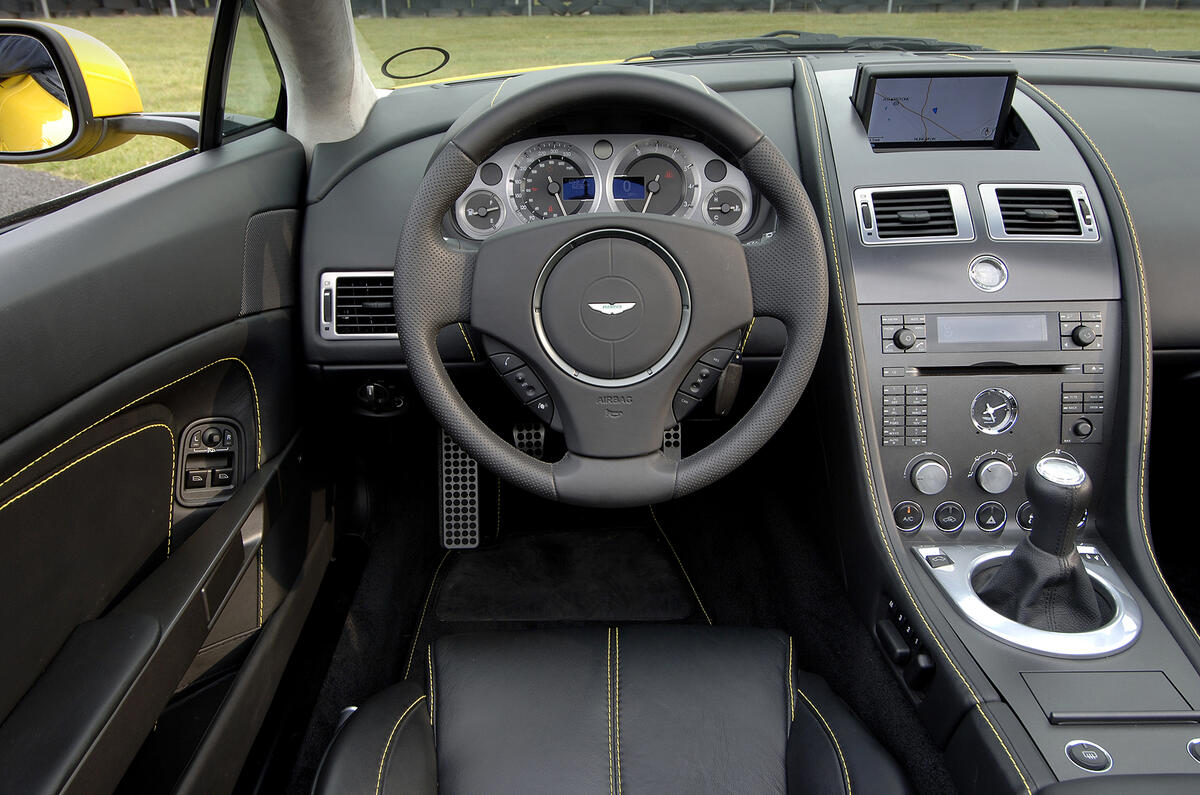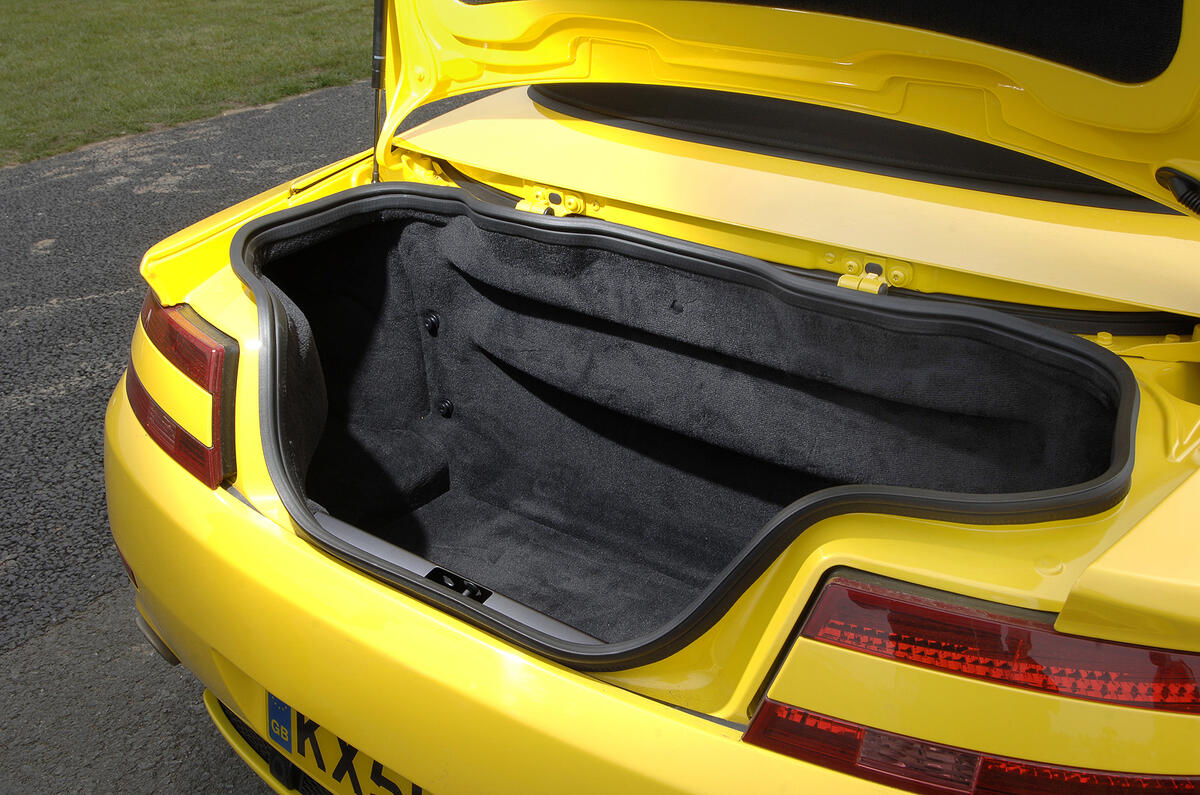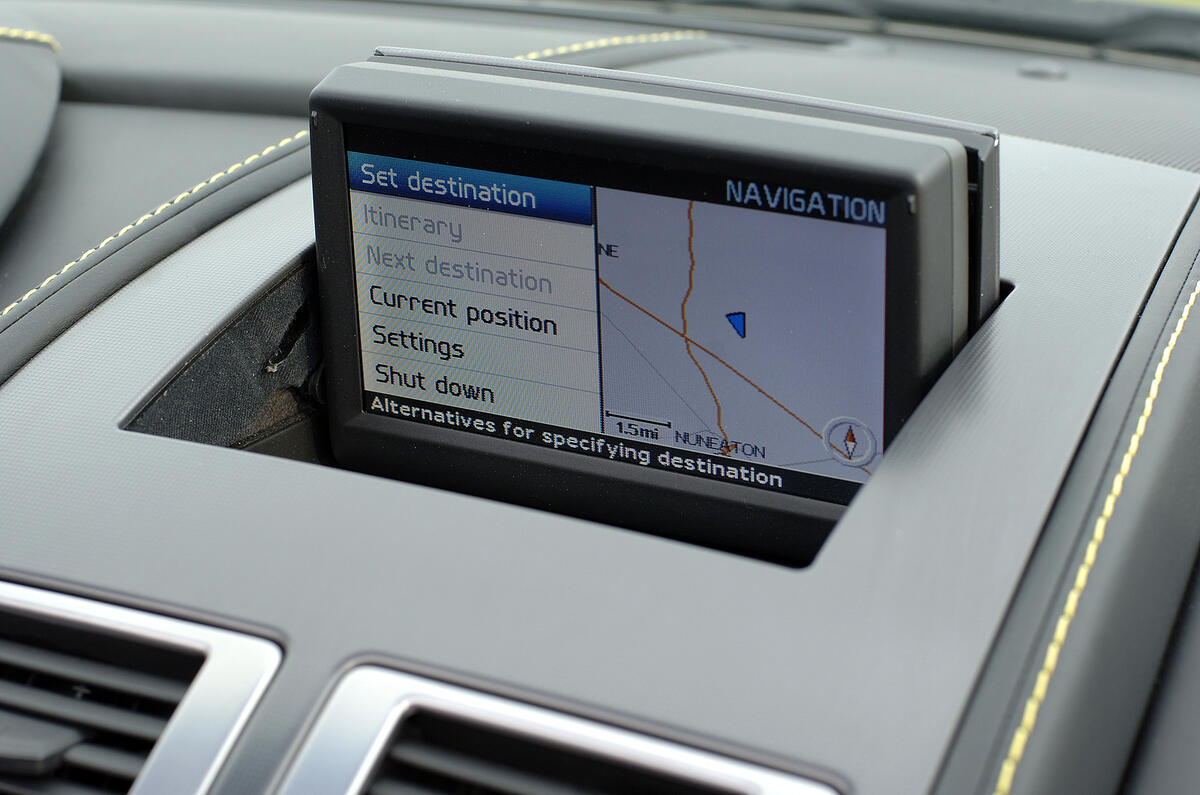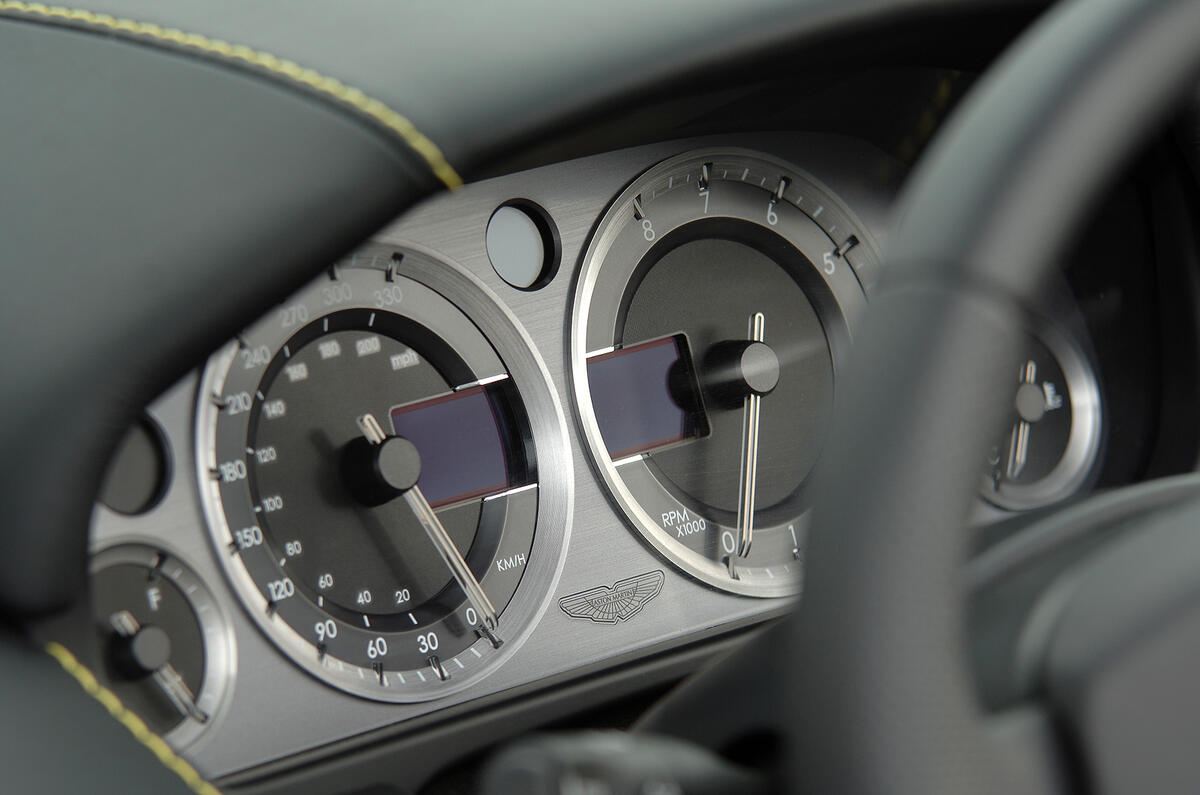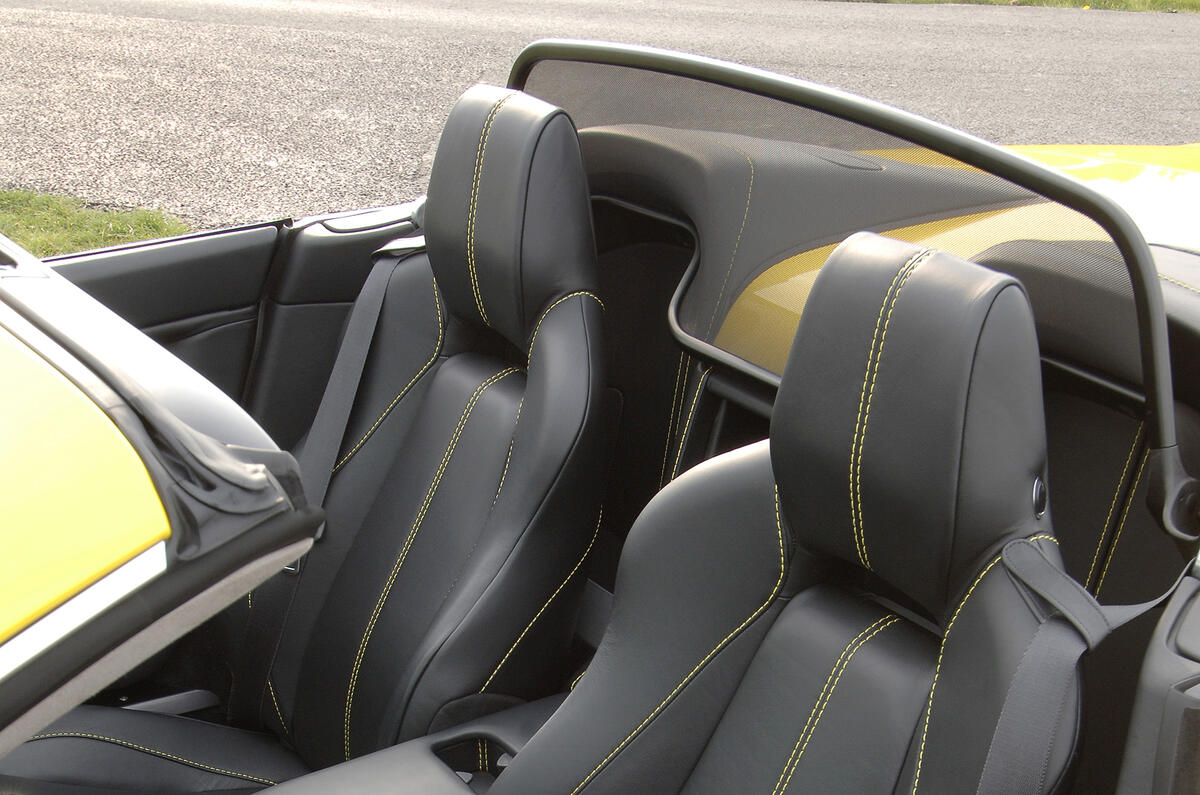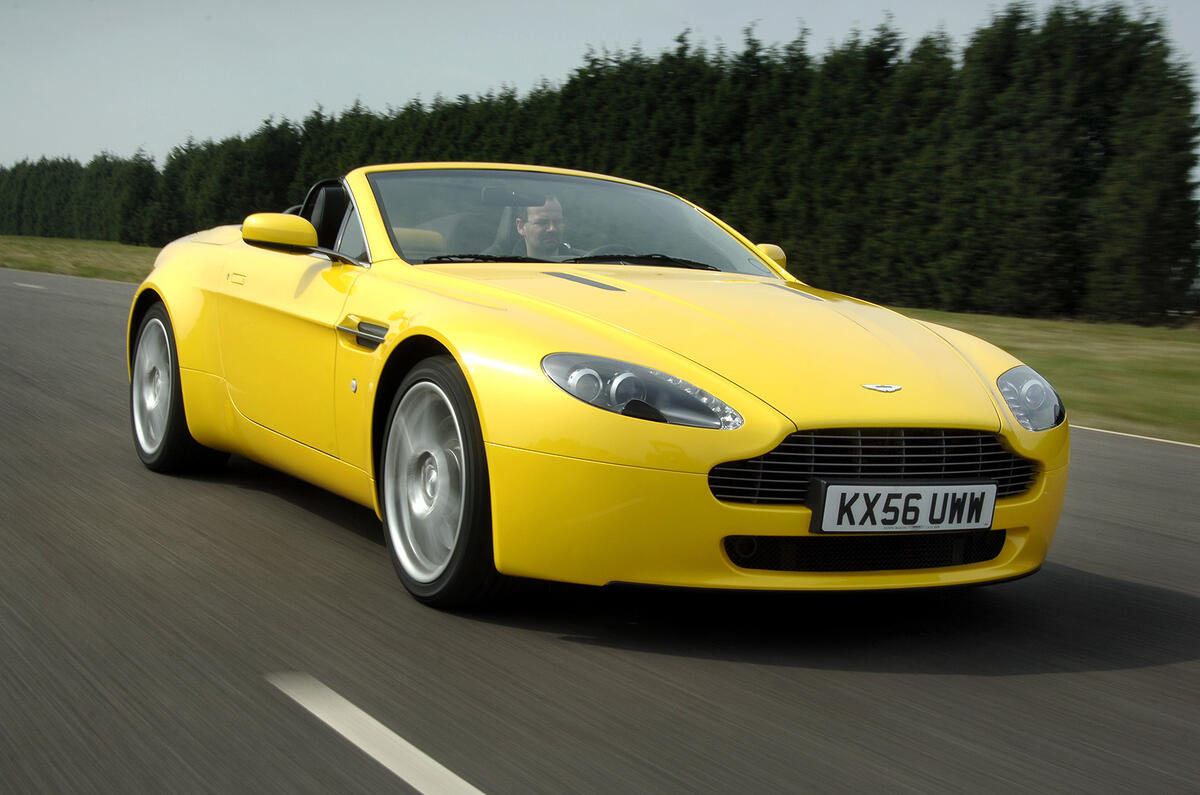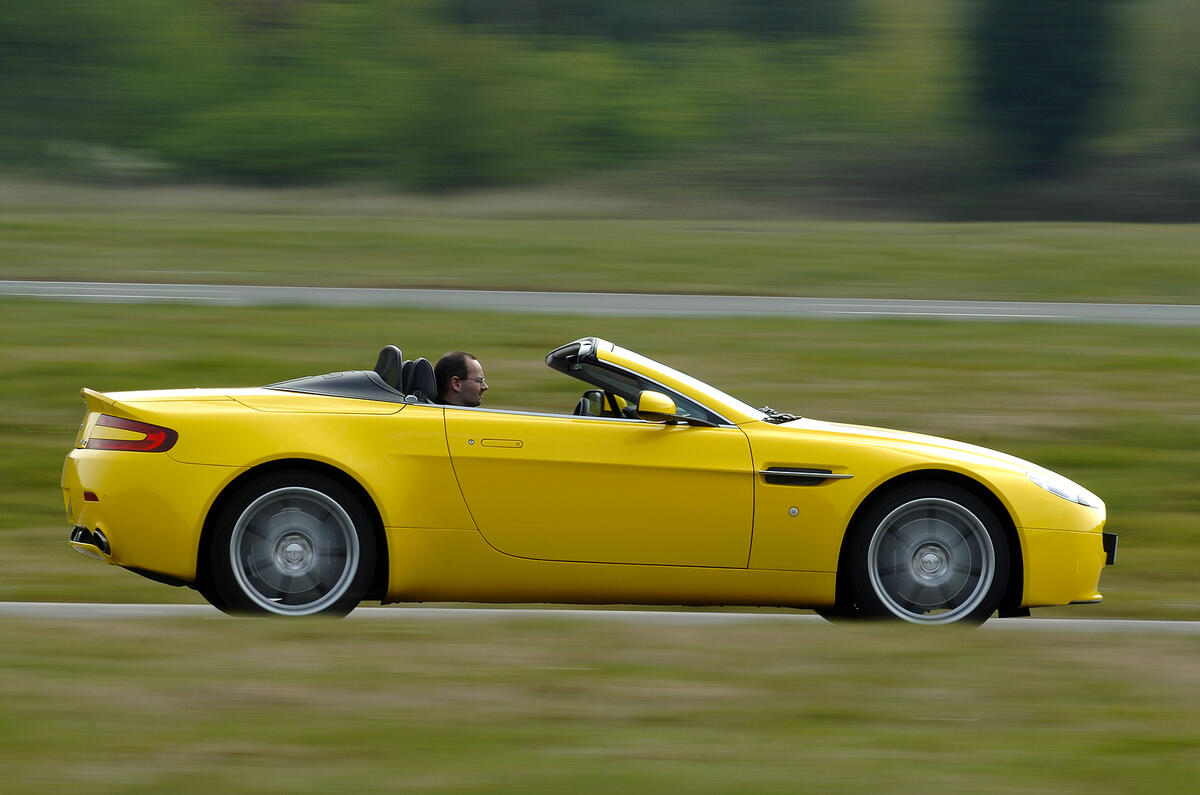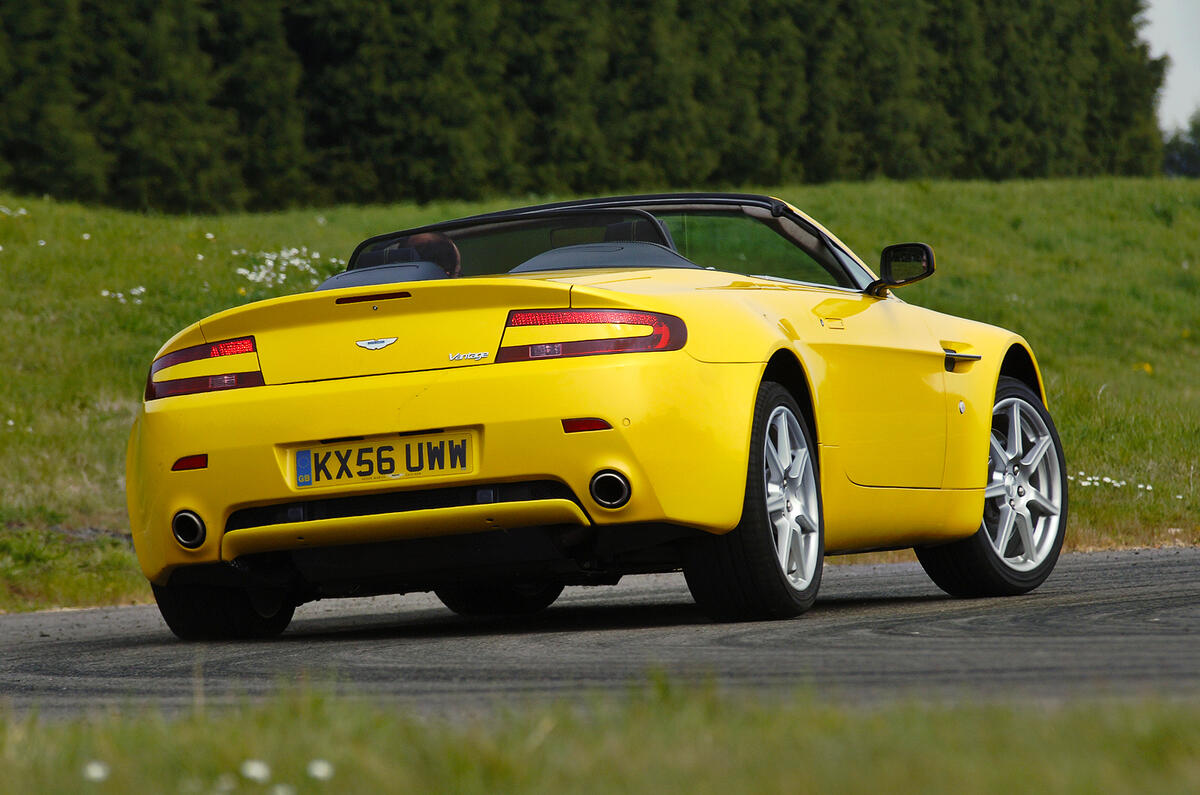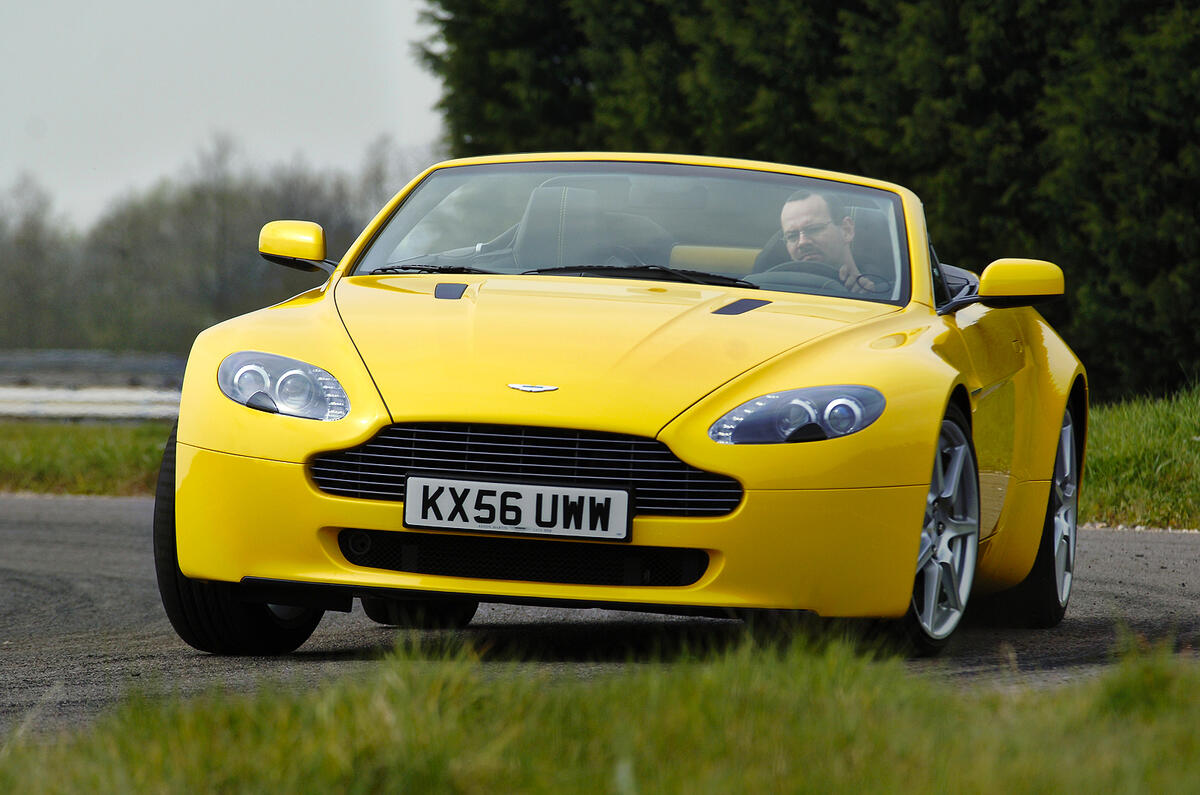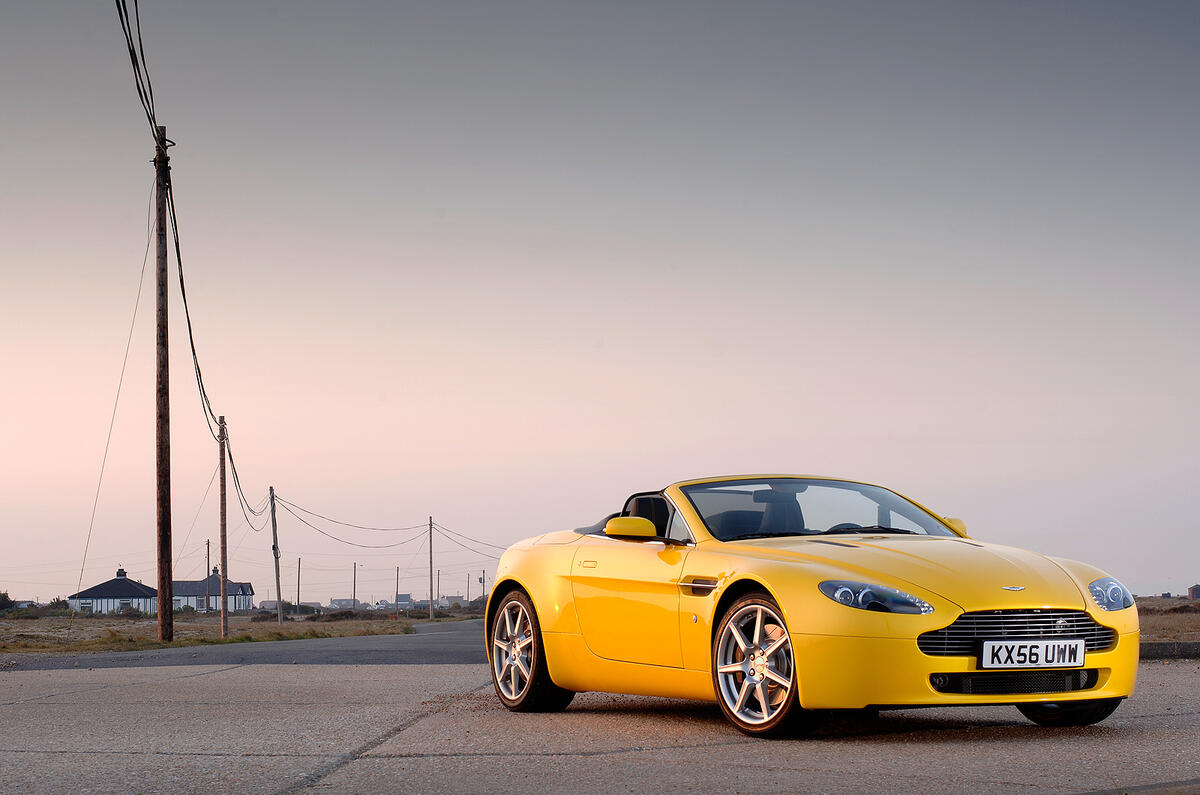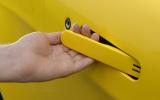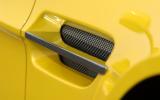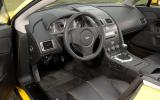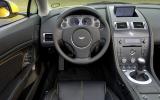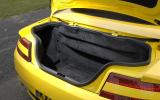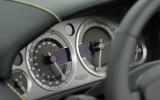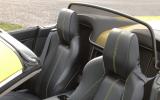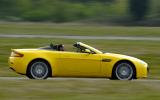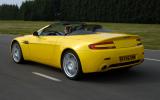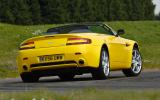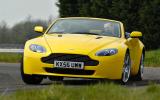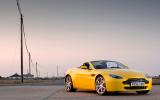Simply stepping inside the V8 Vantage’s cabin goes a long way to conveying the magic of Aston Martin.
The doors are hinged so that as they open they arch not just outwards but also upwards, and pulling them shut behind you gives the impression of a closing canopy, leaving you encased in a cabin trimmed in soft leather, hand stitched – in the case of our test car – in contrasting yellow.
The seats, uprated from those fitted to the original Vantage coupé (new design and more lumbar adjustability) are low-set. With eight-way electric adjustment they can be arranged with a conventional flat base or, should you wish, a more sporting, Italian supercar, ‘bum low, knees high’ position. Either way, most sizes should be able to get comfortable behind the wheel.
Your view is dominated by a high-set scuttle, sculpted into a curved wall of leather and dissected by a centre stack of controls for the heating and infotainment screen. The switchgear is a mixture of bespoke Aston Martin and parts borrowed from Volvo, but the combination is elegant and the design, for the most part, is ergonomically effective.
As with the Vantage coupé and the DB9 before it, the dials are worthy of particular praise, combining clarity with an alluring jewel-like appearance. They’re at their very best back-illuminated in the evening twilight. The inside of the roof is trimmed in tactile alcantara, blending neatly with the covering on the A-pillars, and it makes the soft-top feel no less sumptuous than the coupé.
Furthermore, the removable roof means little sacrifice on longer journeys; there is, as you’d expect, more wind noise than the tin-top, particularly around the B-pillars, but not so much to merit a disturbance.
The biggest price is more restricted rear three-quarter visibility, but that problem that can easily be solved by lowering the roof, leaving a rear view interrupted only by the handsome buttresses.
Yet for all the Vantage roadster’s glamour, it is not without its frustrations: some controls require a precise digit, the switches for the interior lights are confusingly jumbled in among the radio controls and there is precious little storage space in the cabin, while the boot is half the size of the coupé’s (144 litres versus 300).
As for standard equipment, the V8 S Roadster gets 19in alloy wheels, a limited slip differential, sports-tuned suspension, floating brake discs, rear parking sensors, and a carbonfibre front splitter and diffuser on the outside. Inside there is swathes of leather throughout the cabin, climate control, iridium dashboard trim, cruise control, sports seats and Aston Martin's infotainment system.
Upgrade to the V12 S Roadster and you get adaptive suspension, carbon ceramic brakes, touches of Alcantara, LED interior ambient lighting and Pirelli P-Zero tyres.



